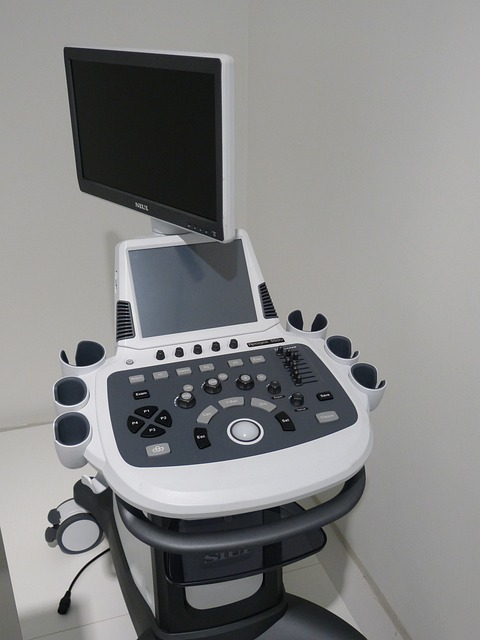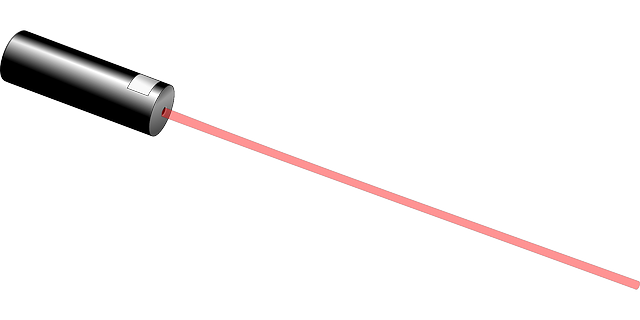Chiropractic Techniques

Chiropractic techniques are aimed at helping people take control of their own health and wellness. It is a drug-free approach to managing pain, stress, and other physical ailments that can be debilitating for some. Whether you’re looking for relief from chronic back pain or just want to maintain your overall wellbeing, chiropractic might be the answer you need.
The practice has been around since 1895 when it was developed by Canadian physician Daniel David Palmer. Since then, chiropractors have used noninvasive methods to help patients feel better without drugs or surgery. These include manual adjustment therapies as well as therapeutic exercises such as stretching and strengthening.
With more than 50 million visits reported annually in the US alone, chiropractic care is one of the most popular forms of natural healthcare today. If you’re curious about what it can do for you and how it works – read on! We’ll cover all the basics of chiropractic techniques so you can make an informed decision about whether this type of treatment could work for you.
Definition
Chiropractic is an alternative healthcare practice that focuses on the diagnosis, treatment and prevention of neuromuscular disorders. It’s a concept based on the idea that misalignments in the spine can cause physical pain as well as other health issues. The chiropractor’s interpretation of this theory is through manual adjustments to correct these misalignments, which helps alleviate many common complaints.
The meaning of chiropractic care goes far beyond simply treating musculoskeletal problems; its goal is to restore balance within the body so it can heal itself holistically. This viewpoint allows for a deeper understanding of how proper alignment of the spine contributes to overall optimal health and wellbeing with chiropractic adjustment. Through individualized treatments tailored to each patient’s needs, chiropractors strive to provide relief from a variety of ailments without resorting to drugs or surgery. With a focus on natural healing methods and preventive care, they aim to empower individuals with knowledge about their own bodies. Transitioning into an exploration of history now…
History Of Chiropractic Care
Take the case of Mary, a 45-year old executive who suffered from chronic neck pain and decided to seek out chiropractic care. Little did she know that her decision was rooted in an ancient practice with origins stretching back as far as 2700 B.C. The history of chiropractic care is closely intertwined with the development of modern medicine, and its practices have been used for centuries by different cultures around the world.
The origin of chiropractic can be traced to 1895 when Daniel David Palmer applied spinal adjustments to treat his first patient’s deafness. From there, it has grown into a widely accepted form of alternative healthcare across many countries today. Chiropractors use natural methods such as spinal manipulation and adjustment to help patients resolve physical issues related to their musculoskeletal and nervous system together, often without any medications or invasive procedures.
Today, millions worldwide enjoy the benefits of chiropractic care in helping them manage physical ailments naturally – sometimes even eliminating them altogether – through the use of this unique healing practice. With more people choosing non-invasive forms of treatment over traditional medicines, chiropractic continues to gain popularity globally as an effective method for managing health conditions. As we move forward into the future, so too will our understanding and appreciation of this age-old practice grow ever stronger. By further exploring its potential we may find new ways to benefit both body and mind alike.
Benefits Of Chiropractic Care

Chiropractic care offers a variety of benefits to patients. From improved mobility and pain relief, to stress reduction and better posture, the benefits of chiropractic are undeniable. One of the primary goals of chiropractic is to restore spinal alignment and maintain normal range-of-motion in joints; this helps relieve pressure on nerves that can cause numbness or even chronic pain. Many people find regular chiropractic treatments help them stay active without discomfort or stiffness. Additionally, many report an overall sense of wellbeing due to reduced stress levels, which often result from improved relaxation techniques learned during treatment sessions. This also helps the immune system to function at normal levels.
The next section will cover various techniques used in chiropractic care for these positive results. By combining skilled manual adjustments with stretching exercises and lifestyle modifications, practitioners strive to create long lasting solutions for their patients’ health concerns.
Techniques Used In Chiropractic Care
The sun rises and the morning light cascades through the window, signaling a new day of healing. Chiropractic techniques have been developed to help alleviate pain, restore motion, and promote general well-being. By utilizing the most frequently used techniques like spinal adjustments, posture correction exercises, nerve stimulation therapies, and other chiropractic treatments, practitioners can effectively treat conditions related to back pain, neck pain, sciatica, headaches, sports injuries and more.
Chiropractors use a variety of manual adjustment techniques and activator technique when attempting to correct misalignments in joints or vertebrae. Such interventions are designed to reduce pressure on nerves that may be causing symptoms such as radiating arm or leg pain. These practitioner-administered spinal manipulations are tailored for each patient’s needs based on age and health history. Patients often find relief from soft tissue manipulation as well; this helps increase joint movement range while reducing inflammation associated with arthritis.
It is not uncommon for patients to experience improved mobility after chiropractic sessions following lying on a special table. Through targeted postural corrections and muscle strengthening exercises administered by their chiropractor alongside regular care visits they can work towards maintaining proper alignment over time – helping them stay active and healthy even longer! With these effective diversified technique used in conjunction with lifestyle changes such as getting adequate sleep and exercise habits – individuals can feel renewed energy throughout life’s journey ahead. As we transition into discussing spinal manipulation therapy next – it is clear why so many seek out chiropractic treatments regularly!
Spinal Manipulation Therapy

Spinal manipulation therapy, otherwise known as spinal adjustment or vertebral manipulation, has been practiced by chiropractors for over a century. It is a physical manipulation that applies force to the joints of the spine in order to restore flexibility and reduce pain. This technique helps improve range of motion and decrease muscle tension while restoring normal joint function. Often its performed on a special table called a drop table.
In addition to relieving painful symptoms, a chiropractic spinal manipulation, can also help correct posture imbalances and lower stress levels through its calming effects on both the body and mind. Chiropractic adjustments are often combined with other treatments such as physical therapy or massage in order to achieve maximum benefit. With regular practice, patients may find that their overall wellbeing improves significantly.
The benefits of spinal manipulation make it an important part of any comprehensive care plan. By addressing underlying issues instead of simply treating symptoms, this type of therapeutic approach provides lasting relief without relying solely on medication or surgery. As we move into exploring soft tissue therapies next, let’s take a closer look at how these techniques can be used to promote healing and recovery from injury.
Soft Tissue Therapies

Have you ever wondered how to naturally heal your body without the use of drugs or surgery? Soft tissue therapies offer a safe, natural way to reduce pain and improve mobility. These therapies include myofascial release, therapeutic massage, active release techniques and rehabilitative exercises.
Myofascial release helps to restore balance in the soft tissues by stretching and releasing restricted fascia (connective tissue). It is done with passive stretches and gentle pressure applied manually. Therapeutic massage uses many different types of strokes such as kneading, gliding, tapping and friction combined with essential oils for relaxation purposes. Active Release Techniques are used to treat injuries caused by adhesions that form between muscles and other connective tissues due to overuse or trauma. This technique involves actively moving joints through specific range of motions while applying tension on the affected area. Finally, rehabilitative exercises help build strength, flexibility and endurance so that you can move more comfortably.
Soft tissue therapies have been proven effective in relieving musculoskeletal pain while improving overall health and well-being. By combining these treatments with joint mobilization techniques, patients can experience long-lasting relief from their injury or condition.
Another type of soft tissue technique that chiropractors have shown significant interest in is the TrapEAZE Technique®. As the first upper back pain specific therapy it’s directly in their wheel house for several reasons including accessing its Doctors Dream marketing system that includes online software, which actively tracks their practices marketing metrics. Beyond that, certification is available for those who want to take their upper back pain skills to the next level.
Joint Mobilization Techniques

Chiropractic joint mobilization techniques are an important part of a chiropractor’s arsenal when it comes to providing therapy for spinal and musculoskeletal conditions. These techniques involve the application of gentle pressure through hands on technique, which can be used in various ways to help improve joint mobility and reduce pain and involves adjusting. Chiropractors use these techniques in conjunction with other forms of manual therapy such as chiropractic adjustments and articulation technique. This combination helps to create better overall alignment and improve range of motion.
Joint mobilizations can also be used to treat soft tissue injuries such as muscle strains or ligament sprains. By applying appropriate force to spinal joint, the chiropractor is able to restore normal range of motion while reducing inflammation and pain associated with the injury. In addition, joint mobilization can also help strengthen weakened muscles that may have become weak due to disuse or overuse injuries. Thus, this type of manual therapy has many benefits for patients suffering from musculoskeletal disorders.
With improved joint function, there is greater ability for proper movement, and freedom from pain – allowing individuals to return to their regular activities without worry or discomfort. Transitioning into nutrition and exercise recommendations will further aid in restoring people’s health by giving them guidance on how best to care for themselves holistically.
Nutrition And Exercise Recommendations

“You are what you eat,” is an adage that still holds true today. Nutrition and exercise play a vital role in the effectiveness of chiropractic care, as it helps to ensure long-term health benefits from treatment. Chiropractors often provide nutrition recommendations based on individual needs which can be beneficial for overall well-being. Additionally, many chiropractors offer tailored exercise plans to fit the needs of their patient’s lifestyle. Some common chiropractic exercises include stretching, core strengthening, and low impact aerobic activities such as walking or swimming. These types of exercises work together with chiropractic treatments to help improve mobility, reduce pain, and increase range of motion.
Chiropractic nutrition and exercise go hand in hand when looking at achieving optimal wellness goals. A balanced diet combined with regular physical activity will help individuals maintain good posture while also providing them with necessary energy throughout the day. For those who want to take their health into their own hands and reap the full benefit of chiropractic care, taking steps towards a healthier lifestyle through proper nutrition and exercise is key! With these two elements working together under the guidance of a qualified practitioner, patients can experience improved quality of life over time. Moving forward onto lifestyle advice…
Lifestyle Advice
Making lifestyle changes can bring numerous health benefits to the body. Chiropractic techniques are a great way to experience pain relief, posture improvement, and stress reduction without drugs or surgery. A chiropractor may suggest various exercises and habits to incorporate into one’s daily life that improve overall function of the spine, decrease muscle tension, and increase flexibility in the joints.
Chiropractors also have access to modern equipment such as special tables, traction chairs, electrical stimulation machines, ultrasound therapy devices, and other treatments designed for optimal healing. These tools help facilitate relaxation during treatment sessions while providing comfort throughout the process. It is important to note that not all the chiropractic adjustment methods work for everyone; however it is likely that with some trial-and-error one will find an approach they enjoy. Moving forward towards better spinal health begins by making simple adjustments in day-to-day activities combined with regular visits to your local chiropractor. From there you can unlock potential pathways toward greater physical freedom!
Ultrasound Therapy

Going the extra mile, ultrasound therapy is another chiropractic technique that has been used to promote healing and relieve pain. In this procedure, high-frequency sound waves are applied directly to a patient’s body in order to deliver deep heat and energy into tissue. Ultrasound treatment encourages increased blood flow and helps the body heal on its own by restoring normal muscle function. Utilizing these ultrasound waves, clinicians can reduce inflammation, stimulate nerve endings for enhanced healing response, and increase flexibility in joints throughout the body.
The application of ultrasound waves also supports cell regeneration which promotes faster recovery from injury or chronic conditions. During an ultrasound session, patients may experience a slight warming sensation as they receive beneficial vibrations that penetrate beneath their skin. The frequency of this treatment is dependent upon several factors including age, underlying condition, type of injury, and severity of symptoms within the individual. All things considered, low-level laser therapy or LLLT may be a more suitable option for certain individuals looking to reap similar benefits from noninvasive treatments.
Low-Level Laser Therapy

Moving on from ultrasound therapy, low-level laser (or cold laser) therapy is a modern technique used in chiropractic care. This type of laser emits light energy that penetrates deep into the body’s tissue and helps to stimulate healing at the cellular level. Low-level lasers have been proven to be effective for pain relief, reducing inflammation and promoting nerve stimulation.
When receiving this treatment, patients typically experience some warmth as the lasers are applied directly to the affected area. Depending on the condition being treated, multiple treatments may be necessary over time to achieve optimal results. In general, most people report an immediate decrease in their pain levels after just one session of low-level laser therapy. For those looking for long term relief from chronic conditions, regular follow up sessions are recommended with your chiropractor.
The next step in treating musculoskeletal issues is electrical stimulation/muscle stimulation which uses similar techniques but works by targeting muscle fibers instead of focusing on cells within tissues.
Electrical Stimulation/Muscle Stimulation
Electrical stimulation, or muscle stimulation, is a chiropractic therapy used to reduce pain and improve physical function. It involves using electrical impulses to stimulate nerve pathways in order to increase blood flow and release endorphins which act as natural analgesics. Muscles are stimulated with low-frequency currents to help them contract and relax properly; this strengthens weakened muscles and increases the range of motion over time. Chiropractic stimulation sends small electrical currents through wires that are attached directly onto the skin near affected areas of pain. The current helps by reducing swelling, inflammation, spasms, and increasing circulation in those areas.
This form of chiropractic therapy has been found to be extremely effective when combined with other forms of treatment such as massage, stretching exercises, lifestyle modifications, etc. Patients have reported decreased levels of pain after receiving electrical or muscle stimulation treatments from their chiropractor. Whether you’re looking for relief from chronic back pain or just want an overall feeling of increased well-being, these therapies can provide it! Looking ahead towards traction therapy: one way your chiropractor may utilize this technique is by gently pulling on your spine…
Traction Therapy
Like a billowing sail, traction therapy provides the wind for chiropractic care. It uses gentle force to open up the vertebral joints in order to reduce pain and discomfort. Spinal traction is also known as spinal decompression, since it works by creating negative pressure within the disc space of the spine. This negative pressure helps restore proper alignment of any misaligned or bulging discs.
The amount of traction force used depends on an individual’s body type and condition being treated. Depending upon the underlying cause of back pain, traction can be delivered statically (holding one position) or dynamically (applying gradual movements). Chiropractors choose different types of traction depending upon their assessment results and patient preference.
Chiropractic traction offers numerous potential benefits including improved posture, decreased nerve irritability, increased joint mobility and range-of-motion, reduction in muscle spasms, improved circulation and enhanced relaxation of muscles surrounding the affected area. With its ability to target specific areas with precision, this form of treatment has become increasingly popular among those seeking relief from chronic back problems associated with aging or lifestyle choices.
Diagnostic Imaging
When it comes to chiropractic care, diagnostic imaging is a vital part of the process. It helps practitioners identify areas of the back spine and related tissues that have become misaligned or are in need of adjustment. The most common type of diagnostic imaging used for chiropractic treatment is x-ray imaging. This technique provides an image of the affected area and can show any potential issues with bones or joints.
MRI and CT scan imaging offer more detailed images than traditional x-rays, allowing practitioners to get a better view of soft tissue structures like discs, nerves, muscles and ligaments. Ultrasound imaging is also useful as it enables practitioners to assess joint function and flexibility during adjustments. All these techniques help ensure patients receive safe and effective treatment tailored to their individual needs.
Chiropractors rely on accurate diagnosis achieved through advanced diagnostic imaging technology so they can provide effective treatments that promote long-term spinal health in order to improve overall quality of life for each patient. By using modern technologies such as MRI, CT scan and ultrasound imagines, chiropractors can give their patients comprehensive assessments without having to resort to invasive procedures or surgery.
Frequently Asked Questions
What Qualifications Do Chiropractors Have?
Unlocking the mysteries of chiropractic qualifications is like finding a key to freedom. In order to become a qualified and licensed chiropractor, one must complete various levels of education and training programs in addition to meeting certain requirements.
Chiropractors need to have knowledge that extends beyond their own field and into related areas such as anatomy, physiology, nutrition, biomechanics, therapy techniques and more. Chiropractors are required to meet educational and licensing requirements set by the state or territory they work in. To become a practicing chiropractor, applicants must hold an accredited degree from an approved program at an accredited college or university. The most common degrees for chiropractors are Doctor of Chiropractic (DC) or Bachelor of Science (BS) in Chiropractic Medicine. Most states also require additional examinations before granting a license for practice.
The duration and content of chiropractic education varies depending on the school attended but typically consists of 4-5 years of undergraduate study followed by 4-5 years at a graduate level with emphasis on clinical experience under supervision. Students will learn about assessment techniques, diagnosis procedures, physical rehabilitation methods such as manipulation/adjustment techniques, massage therapy techniques and patient care skills during their studies – all necessary components to becoming proficient in this medical field. In some jurisdictions there may be further tests which demonstrate competency after completing schooling prior to being eligible for licensure as well as continuing education courses throughout a practitioner’s career in order to maintain credentials.
Are There Any Side Effects To Chiropractic Care?
Are there any side effects to chiropractic care? This is a question many people have when considering this type of treatment. It’s important to understand that, while it can be beneficial in many ways, there are potential risks associated with chiropractic manipulation.
Chiropractic side effects can range from mild discomfort and soreness to more serious issues depending on the individual patient. In some cases, spinal adjustment may even cause vertebral artery dissection or stroke. However, these instances of adverse events are rare and research suggests that long-term effects of chiropractic care are generally positive for patients suffering from chronic pain conditions such as lower back pain, neck pain, and headaches.
The key is to find an experienced practitioner who follows proper protocols and techniques during treatments. A good doctor will take into account your medical history as well as any existing health concerns before beginning treatment so that they can manage the risks associated with chiropractic care appropriately. With the right professional by your side, you can reap all the benefits of chiropractic treatment without worrying about potential negative side effects.
Is Chiropractic Care Covered By Insurance?
When considering chiropractic care, many people wonder if it’s covered by insurance. The good news is that some insurance providers do offer coverage for certain types of services provided by a licensed chiropractor. However, the amount and type of coverage can vary widely depending on your specific plan and provider.
It’s important to note that even with insurance coverage, you may still be responsible for paying the full cost of your treatment up front. Your insurance provider will then reimburse you for any benefits allowed under your policy. It’s also important to check with your insurer before seeking chiropractic care so that you understand what is and isn’t covered by your policy as well as any deductibles or copays you might have to pay out-of-pocket.
The upside is that chiropractic care has many potential health benefits beyond pain relief, such as improved mobility, better posture and increased flexibility — all which contribute to a greater sense of freedom in life. Depending on your individual needs and overall healthcare goals, investing in these treatments could provide long-term value both physically and financially.
How Often Should I Receive Chiropractic Care?
Did you know that 8 out of 10 adults have experienced back pain in their lifetime? That’s why it is so important to establish a chiropractic care plan that works for your needs. When considering how often should one receive chiropractic care, there are many factors to consider such as frequency, duration and intervals between treatments.
Chiropractic sessions can vary depending on the individual’s health condition and desired goals. Generally speaking, patients who want immediate relief from symptoms may benefit from frequent visits initially while others who need long-term support might find they only require occasional treatment over time. Ultimately, each person will determine what kind of chiropractic frequency best suits them based on trial and error.
It is also important to note that not everyone requires the same amount of time for healing – some people recover quickly with minimal effort, while others may take longer periods before seeing results. Therefore it is essential that you create an effective strategy tailored to your own unique situation by consulting with your doctor or healthcare provider about appropriate chiropractic treatments and intervals. By doing this, you will be able to maximize the effects of your therapy while minimizing any potential risks associated with over-utilizing these techniques.
What Is The Difference Between Chiropractic Care And Physical Therapy?
Chiropractic care and PT are two distinct forms of treatment used to treat a variety of musculoskeletal conditions. But, what is the difference between them? While both treatments can help improve your overall health and wellbeing, there are some key differences that should be considered before deciding which one will work best for you.
When it comes to chiropractic care, this approach focuses on treating problems related to the spine and joints. Chiropractors use hands-on techniques such as spinal manipulation or adjustments to realign the body’s structure and reduce pain associated with misalignments in the musculoskeletal system. PT, on the other hand, utilizes exercise programs tailored to each individual patient’s needs. This helps strengthen muscles and increase range of motion while promoting proper healing of any injured areas through stretching exercises.
So if you’re trying to decide between chiropractic care and PT, consider what kind of issue you’re dealing with: If it’s something related to alignment or posture then chiropractic might be more appropriate; however if muscle strengthening or mobility issues are involved then PT would likely be more beneficial. Ultimately, consulting with an experienced provider who can assess your specific situation will help determine which form of treatment is right for you.
Conclusion
The world of chiropractic care is mysterious and complex, but it doesn’t have to be intimidating. At the end of the day, I think we can all agree that having a qualified professional help us with our aches, pains and ailments is essential for keeping us healthy and happy! Chiropractors are highly trained experts who understand how the body works and what techniques provide relief. While there may be some side effects associated with chiropractic treatment, they’re usually minor and manageable. Plus, many insurance companies cover at least part of the cost – so don’t let money stop you from trying this type of care. All in all, it’s important to remember that chiropractic techniques offer an effective way to improve your physical health without medication or surgery. So if you’re looking for a safe and natural alternative to traditional treatments, look no further than chiropractic treatment!
Legal Disclaimer
The information provided on this blog is intended for educational purposes only and is not intended to replace the advice of your healthcare provider. The authors and publishers of this blog are not responsible for any damage, injury, or loss resulting from the use of the information contained herein.
The information provided on this blog is not intended to diagnose, treat, cure, or prevent any disease. Always seek the advice of a healthcare professional before starting any new treatment or changing any existing treatment.
The authors and publishers of this blog are not liable for any direct, indirect, incidental, consequential, or punitive damages arising from the use or misuse of the information contained herein.
The authors and publishers of this blog make no representations or warranties of any kind, express or implied, about the completeness, accuracy, reliability, suitability, or availability with respect to the information, products, services, or related graphics contained on this blog for any purpose.
Any reliance you place on such information is therefore strictly at your own risk. In no event will the authors and publishers of this blog be liable for any loss or damage including without limitation, indirect or consequential loss or damage, or any loss or damage whatsoever arising from loss of data or profits arising out of, or in connection with, the use of this blog.
Through this blog, you are able to link to other websites which are not under the control of the authors and publishers of this blog. We have no control over the nature, content, and availability of those sites. The inclusion of any links does not necessarily imply a recommendation or endorse the views expressed within them.
Every effort is made to keep the blog up and running smoothly. However, the authors and publishers of this blog take no responsibility for, and will not be liable for, the blog being temporarily unavailable due to technical issues beyond our control.
This legal disclaimer is governed by the laws of the State of Florida and any applicable federal laws of the United States. Any dispute arising out of or in connection with this legal disclaimer shall be resolved through arbitration in accordance with the rules of the American Arbitration Association, and judgment upon the award rendered by the arbitrator(s) may be entered in any court having jurisdiction thereof.
